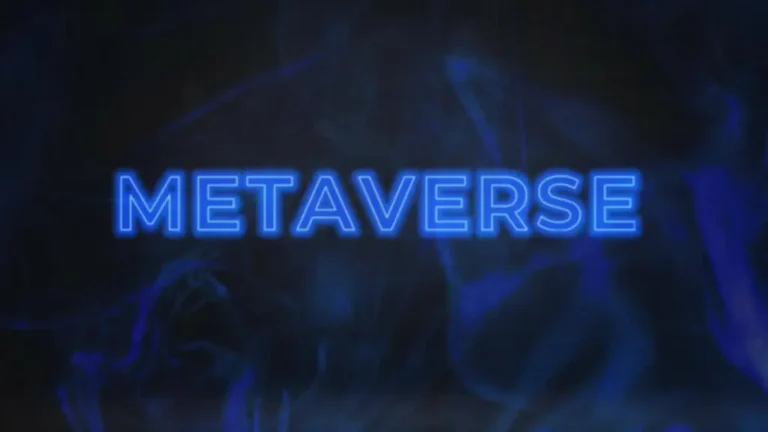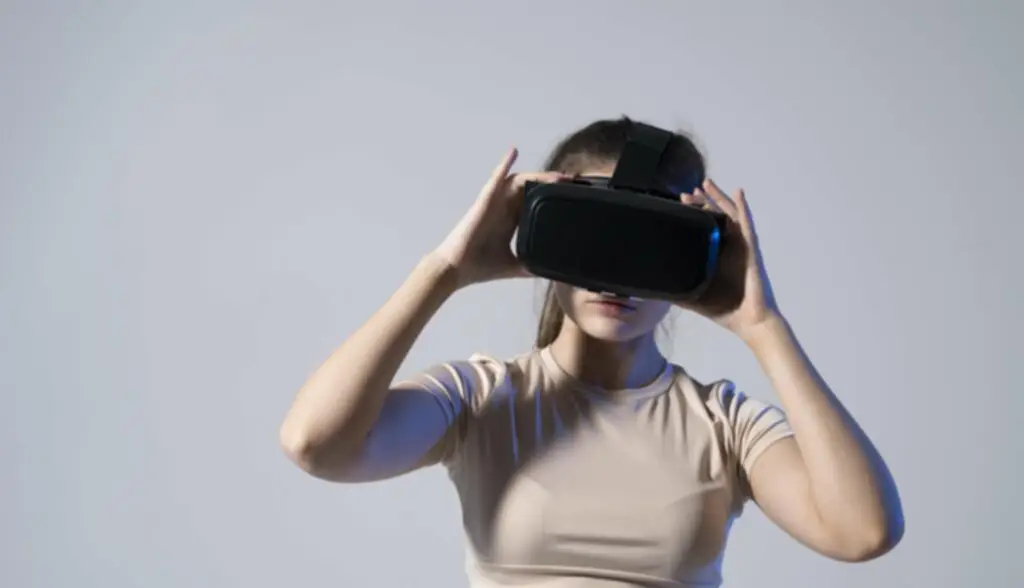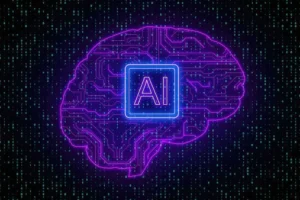Top Technologies Metaverse

Without the evolution of technology, we wouldn’t be able to enhance our current devices and secure the best possible user experience. Metaverse is one such example of technological progression.
Only a decade ago, our communication was limited to voice calls, text messages, and occasional video calls through Skype with regular disconnections. Today, we are exploring the possibility of creating a virtual reality where we can interact with other people in an entirely different way than we used to.
The metaverse grants us the prospect of entering a new Internet age. However, the metaverse is still only in development. Some of the most powerful and resourceful developer companies are currently working on their versions of the metaverse. The development process requires the usage of modern technologies.
But what technologies do developers use to create the metaverse? Check out this article to learn about technologies metaverse that will shape virtual reality’s future.
What is metaverse?
The term metaverse isn’t new, but most people don’t know that it was coined in 1992 by science fiction author Neal Stephenson. In his novel «Snow Crash,» Stephenson described the metaverse as an all-encompassing virtual space existing in parallel to our world.
However, experts in 2022 still can’t agree on the metaverse’s appearance. Most developers of technologies metaverse have different views on the topic. One thing is for sure: the metaverse is the future of the Internet.
Simply put, the metaverse is a combination of virtual reality and mixed (VR and AR) reality worlds. People may access this world through a VR headset, AR glasses, or a browser.
Once inside the digital world, people may interact with the environment and each other in real-time. Thus, this new reality effectively erases real-life borders, allowing people to spend time together even when living thousands of miles apart.
However, our current metaverse is a series of several disconnected metaverses. Current technologies metaverse is like «walled gardens» during the early stages of the Internet. Back then, darpa.net, bit.net, and aol.net were disconnected until they eventually formed the Internet we now know.
Users are already enjoying some fragments of the metaverse. Each current metaverse world has a separate digital space, avatars, different interactions, currency, and ways of entering reality.
For instance, we have games like Fortnite, Roblox, Decentraland, and Minecraft. Each game has metaverse elements, but all these virtual worlds are separate from each other. You can’t enter Roblox and find a Decentraland section.
Some scientists claim that we will have a single metaverse in the future, just like we now have one Internet. Others argue every metaverse is going to be different. The results depend on the technologies metaverse that will form the future meta reality. Check out top technologies that are helping forge the future of the metaverse.

We are confident that we have what it takes to help you get your platform from the idea throughout design and development phases, all the way to successful deployment in a production environment!
VR headsets
Undoubtedly, virtual reality (VR) devices such as headsets or gloves will play a crucial role in communication in the future. In the metaverse, users are going to use VR headsets to interact with each other and virtual reality.
Regardless of what we decide to do, work, play, or even study, we may be using virtual reality headsets for a better experience. We might be able to enter some versions of the metaverse through browsers, but most developer companies aim at a more fulfilling digital experience through VR devices.
As for the gaming industry and metaverse, VR devices should replace gaming consoles. Moreover, the traditional business and the online gaming industry may merge at some point. Companies may cooperate with game developers like Roblox or Fortnite to create realistic virtual reality experiences for their customers.
However, VR product developers will have several challenges to overcome. For instance, current VR devices have low resolution, while ideally, they should have 8k resolution to achieve a more realistic experience.
Another problem is motion sickness. Some people can’t use VR headsets because they immediately feel dizzy. Developers should increase the refresh rate to 120hz to fix the problem. Developer companies would also have to develop VR sets for other body parts, to create an illusion of a different reality. For example, Meta is already working on VR gloves to pair with a VR headset to enable users almost literally to immerse into a different reality.
AR glasses
Augmented reality (AR) devices, just like virtual reality headsets, should sooner or later become a part of our daily lives. However, AR products are more subtle. Instead of using headsets, we may be using AR glasses.
The concept of AR glasses is not new. Google announced the development of Google Glass years ago, but the project was put on hold. It seems this project is to be revised, but this time Google will release their AR glasses.
AR may be used to enrich our everyday interactions with real objects. For example, when visiting a local store, instead of interacting with a real manager, we would be able to interact with a hologram of the salesperson.
AR should be useful when exploring new architectural objects or objects that aren’t yet built. For instance, an architect may build an object within the metaverse and use AR to navigate inside the building to find potential issues. AR should also change the way we interact with each other.

Blockchain and cryptocurrency
Blockchain technology should bring decentralization to the metaverse. Currently, Meta and Microsoft have their versions of a metaverse in development. However, both these virtual realities are centralized.
Blockchain technology enables the replacement of the centralized metaverse concept with a more powerful decentralized infrastructure. Today, blockchain has a critical role in Web 3.0 development. Since the metaverse will be based on the new web, it has to be built on top of a decentralized platform.
Blockchain tech can help with the following tasks:
- data storage;
- data protection;
- maintaining interoperability between different metaverses;
- self-identity authentication.
Moreover, metaverse visitors can use cryptocurrency native to the blockchain to buy virtual objects or pay for virtual services. Blockchain technology will safely secure the ownership of these objects.
NFTs and decentralized finance
Decentralized finances (DeFi) should become a central part of the metaverse’s economy. Crypto coins or tokens should fit perfectly into the digital environment. Once users enter the virtual world, they can purchase and sell digital objects by using cryptocurrency.
Given most developer companies have different views on the metaverse, we will have different virtual realities. It means each reality should have a different currency.
Every metaverse developer will also create their native digital currency. But the issue here is that product developers would have to come up with ideas on how to exchange one currency for another.
Today, we associate NFTs with the process of buying and selling digital items. It’s only logical to assume that in the future, NFTs should be used to indicate the ownership of virtual assets within the metaverse. NFTs should cover all digital items, including virtual property to suits and accessories a person’s avatar wears.
Artificial Intelligence (AI)
Artificial Intelligence (AI) is probably one of the most important technologies for the development of the metaverse. AI can perform several important tasks that maintain the efficiency of the Metaverse.
AI could be valuable for monitoring servers to guarantee cybersecurity. Moreover, developers can use AI to achieve smarter responses within digital reality.
Inside the metaverse, realistic-looking AI characters can interact with us or each other. For example, they could have their own stories, goals, and tasks.
Developers can implement entire scenarios with these characters having tasks. Real users would have to interact with AI-powered characters to reach their goals.
Three-dimensional modeling
Metaverse can’t become a truly immersive platform without three-dimensional (3D) modeling. We have many 3D tools that can be helpful for businesses developing virtual realities and VR and AR-related products.
Modern 3D tools enable users to reconstruct objects with sensors. Even some mobile devices can reconstruct objects in 3D, i.e., iPhones with LiDAR infrared depth sensors. This feature should enable digitizing objects so that they can be added to virtual realities.
Today, it’s impossible to fully digitize a human body to add it to a virtual environment. But it should be possible in the future. Currently, the next best thing is using 3D to create avatars and use them in the metaverse. 3D will play a critical role in the first stage of the metaverse as it enables developers to create and animate virtual avatars.
Internet of Things (IoT)
The Internet of things (IoT) is a mechanism that connects the physical world to the Internet by using sensors and devices. These devices have a unique identifier and the ability to automatically transfer and receive data once connected to the Internet.
Currently, IoT connects such devices as medical gadgets, thermostats, voice activation speakers, and other gadgets to various data sources. IoT is also going to play a role in powering the metaverse.
Metaverse’s IoT apps should be able to gather and distribute data from the physical world. This feature will secure advanced and accurate digital representations within the virtual environment. For instance, some digital objects in the metaverse might act differently based on current weather conditions.
Moreover, developers can seamlessly adapt 3D environments to a wide set of our real-life gadgets through the Internet of things. The usage of this technology should also help create simulations within the virtual world.
Developers may also combine the usage of IoT and machine learning technologies to optimize the metaverse by handling the data collected by the system.
Web 3.0
Web 2.0 enables massive user participation in creating various content on social media, blogs, and shared platforms. However, web 2.0 mainly empowers centralized technological giants. Moreover, web 2.0 has a loop that enables surveillance, unauthorized data collection, and exploitative advertising.
Luckily, web 3.0 should prevent this from happening in the metaverse. Web 3.0 has a decentralized blockchain protocol that enables users to connect to the Internet where they own the data. Additionally, web 3.0 will enable a better connection between different data sources.
5G
The metaverse requires connecting users worldwide, but the problem is that virtual reality headsets often use large amounts of data. This is why some developers are more interested in using 5G, as this technology has been improving over recent years.
Modern 5G tech provides the power needed to secure real-time data transfers. Moreover, with 5G, users don’t need to wait until they get home to use VR/AR devices to enter the metaverse. With 5G, we would be able to immerse in the virtual environment from any location.
5G also provides more bandwidth, enabling VR rendering on an edge device connected to a person’s headset. Such a feature may impact the future of VR devices, specifically their size. Hopefully, product developers will find a way to produce smaller VR sets in the future.
Non-playable characters or digital humans
Some developers may choose to add digital humans or non-playable characters (NPCs) in the role of virtual assistants. According to the report by Gartner in 2021, this technology should become relevant in the future years, especially thanks to extended reality (XR) technologies.
Some developer companies, like UNEEQ, are already working on creating digital humans. Currently, we have such digital assistants as Alexa and Cortana. But these assistants are abstractions without a face or body. New assistants should be more advanced and offer a more comfortable user experience, especially within the metaverse.
Edge computing
Immersive experiences in virtual environments won’t be possible without fast data transfers. That’s why most analysts predict that edge computing is going to play an important role in powering the metaverse. Edge computing guarantees fast data transfers with few delays.
If millions of people worldwide simultaneously enter one virtual environment, the cloud or servers may not handle all processing power and maintain the system. However, edge computing can bring processing closer to each user so that the experience of immersing in virtual reality is much smoother.
Final words
Most see the metaverse as a combination of virtual and augmented realities. However, VR and AR aren’t the only technologies used in metaverse development. For example, blockchain plays a critical role in the development process.
Blockchain offers a decentralized infrastructure and enables the compatibility of metaverse with Web 3, which is considered the next phase of the Internet. The development of listed top metaverse technologies (such as AI, AR glasses, VR headsets, 3d modeling, etc.) will make it more accessible over the next few years.
Top Articles
Defining Neuro-Symbolic AI and Its Significance
I am here to help you!
Explore the possibility to hire a dedicated R&D team that helps your company to scale product development.






